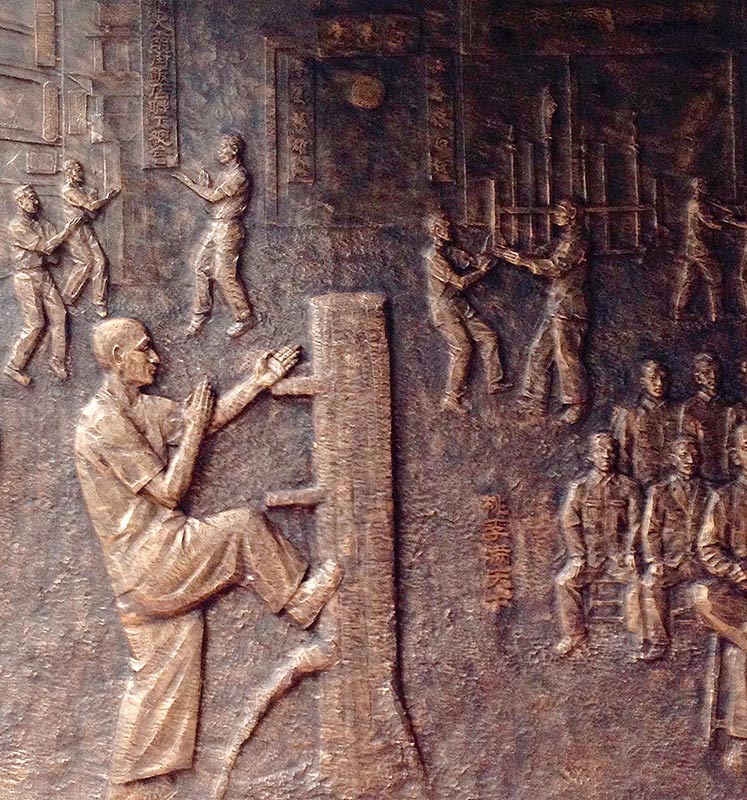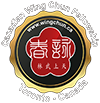Wing Chun Forms
The Wing Chun (Ving Tsun) system consists of three empty hand forms, Sil Lim Tao (Little Idea), Chum Kil (Searching Bridge) and Biu Tze (Thrusting Fingers). These three forms create a lexicon or library of techniques and principles in the Wing Chun (Ving Tsun) system. Each of the Wing Chun (Ving Tsun) empty hand forms build a foundation for the next form.

Image of Ip Man Wing Chun
WING CHUN FORMS
WING CHUN EMPTY HAND FORMS.
The Wing Chun (Ving Tsun) system consists of three empty hand forms, Sil Lim Tao (Little Idea), Chum Kil (Searching Bridge) and Biu Tze (Thrusting Fingers). These three forms create a lexicon or library of techniques and principles in the Wing Chun (Ving Tsun) system. Each of the Wing Chun (Ving Tsun) empty hand forms build a foundation for the next form.
Sil Lim Tao (Sil Nim Tao) – Little Idea Form
The Sil Lim Tao form, is the first form Wing Chun (Ving Tsun) students learn. While the form itself is ‘simple’ when compared to other martial arts systems on the surface. But to preform the Sil Lim Tao correctly, a practitioner must keep several principles in mind. These principles help the Wing Chun (Ving Tsun) practitioner to self-correct, any errors while performing the Sil Nim Tao.
The Sil Lim Tao provides the student an application of the following Wing Chun (Ving Tsun) key theories and principles:
- Centerline
- Facing
- Gates
- Structure Unification
- Stance (Yee Gee Kim Yeung Ma)
- The Tan, Bong & Fook relationship
- Alignments
People of all ages and capabilities are welcome to try Wing Chun. Chinese Martial arts are as mental and spiritual and they are physical, developing the Ving Tsun student immensely on many levels.
The Sil Lim Tao provides the Wing Chun (Ving Tsun) practitioner all the core hand techniques or positions in Wing Chun. It can be said that the Sil Lim Tao is the foundation for the entire Wing Chun system. Only with diligent practice and correction will a Wing Chun practitioner be able to move on to the Chum Kil (Searching Bridge) form. If a student moves on to the Chum Kil without a solid understanding of correct concepts and principles found and taught in the Sil Nim Tao form, the journey will take longer. The best analogy of progressing to soon is trying to run before you can truly walk. You will eventually get it, but you will fall a lot more, and take longer to master it.
Chum Kil (Chum Kiu) – Searching Bridge Form
The Wing Chun (Ving Tsun) form of Chum Kil, is the second empty hand form that a Wing Chun practitioner learns. As mentioned above, without a solid understanding and a rudimentory mastery of the Sil Lim Tao, learning and performing the Chum Kil form correctly will be difficult and daunting to the practitioner. The Chum Kiu form now introduces footwork, motion, turning and centralization to the Wing Chun practitioner. When observing the Chum Kiu form, it should be noted that the practitioner is learning to search for a bridge to his or her opponent, and that the core of the Chum Kil form covers defensive tatics in the Wing Chun (Ving Tsun) system.
The Chum Kil form now takes the principles learned in the Sil Lim Tao and applies them dynamically, or in motion. Along with teaching concepts of:
· Centralization
· Balance
· Forward & turning Energy
· Footwork / Stepping
· Che Ma (Turning Horse)
· Kicking
Biu Tze (Bil Jee or Bil Tze) – Thrusting Fingers
The Third empty hand form in the Wing Chun (Ving Tsun) system is the Biu Tze or ‘Thrusting Fingers’ form. As with all the other Wing Chun forms, without a solid understanding and good building blocks made and set by the Sil Lim Tao and Chum Kiu form, the Biu Jee form will only cause confusion and frustration to the Ving Tsun student.
The Bil Tze form as also been called the ‘Emergency Form’ for when your centerline has been compromised. This has been a form, in years passed been considered ‘secret’ and trained only by cover of night or behind closed doors.
The Bil Jee form stresses above all, the returning to center, and the application of short range power and generation, and use of elbows, gaun sau and bil sau. It can be seen that the Biu Tze form is purely offensive in both tatics and technique.
It should be said that because the Wing Chun forms (especially when compared to other systems of martial arts) are short, direct, and unflowery, one could learn all the Wing Chun (Ving Tsun) empty hand techniques in months, but to truly master and understand them fully can take years of dedication and practice.
